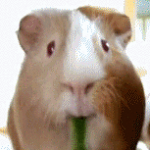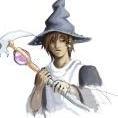Search the Community
Showing results for tags 'kelp'.
Found 7 results
-
When gathering kelp, the action bar says "gathering grass". The event tab works gives the correct message [12:22:17] You start to gather wild kelp. [12:22:23] You gather 3 kelp. I believe the action bar should say "gathering kelp" or nothing at all?
- 2 replies
-
- kelp
- action bar message
-
(and 1 more)
Tagged with:
-
When I try to harvest kelp which is clearly within reach as I can harvest reed at the same level, I get this message: [16:10:32] This kelp is growing out of your reach. Am I doing something wrong or is this intended? it has been this way for a while.
-
Wikipedia: [0] http://en.wikipedia.org/wiki/Soda-lime_glass Soda-lime glass, also called soda-lime-silica glass, is the most prevalent type of glass, used for windowpanes, and glass containers (bottles and jars) for beverages, food, and some commodity items. Glass bakeware is often made of tempered soda-lime glass. Soda-lime glass accounts for about 90% of manufactured glass. Soda-lime glass is relatively inexpensive, chemically stable, reasonably hard, and extremely workable. Because it is capable of being re-softened and re-melted numerous times, it is ideal for glass recycling. Soda-lime glass is prepared by melting the raw materials, such as sodium carbonate (soda)[1], lime, dolomite, silicon dioxide (silica)[2], aluminium oxide (alumina), and small quantities of fining agents (e.g., sodium sulfate, sodium chloride*) in a glass furnace at temperatures locally up to 1675 °C. (*Wurmpedia: http://www.wurmpedia.com/index.php/Salt) [00] http://en.wikipedia.org/wiki/Float_glass Float glass is a sheet of glass made by floating molten glass on a bed of molten metal, typically tin*, although lead and various low melting point alloys were used in the past. This method gives the sheet uniform thickness and very flat surfaces. Modern windows are made from float glass. Most float glass is soda-lime glass. (*Wurmpedia: http://www.wurmpedia.com/index.php/Tin) [1] http://en.wikipedia.org/wiki/Sodium_carbonate It can be extracted from the ashes of many plants growing in sodium-rich soils, such as vegetation from the Middle East, kelp* from Scotland and seaweed from Spain. (*Wurpmedia: http://www.wurmpedia.com/index.php/Kelp) [2] http://en.wikipedia.org/wiki/Silicon_dioxide Silica is most commonly found in nature as quartz*, as well as in various living organisms. Silica is one of the most complex and most abundant families of materials, existing both as several minerals and being produced synthetically. Silica is used primarily in the production of glass for windows, drinking glasses, beverage bottles, and many other uses. It is a primary raw material for many ceramics such as earthenware, stoneware, and porcelain. (*Wurmpedia: http://www.wurmpedia.com/index.php/Heap_of_sand) -=-=-=-=-=-=-=-=-=-=-=-=-=-=-=-=-=-=-=-=-=-=-=-=-=-=-=-=- Glassworking: I suspected/realize that this has been suggested before, but I will submit what I have compiled here because I enjoyed formatting my small research on the topic. I also want to add what I would like to see in glassware, should it ever be introduced to Wurm: Glass containers will preserve the QL of liquids better than other materials. Wine QL improvement would naturally be slowed; Wikipedia: "The development of glass bottles with cork closure made it possible to more consistently age wine." Although it will not be absorbing the chemical compounds of the wooden barrel, supposedly enhancing the quality of the wine. Containers would be lighter than pottery equivalents, due to the thinner wall, and would be improvable upon becoming glowing hot, but would require more labor to craft. Tools to create/improve glass would be created through blacksmithing, such as a blowpipe and shaping paddles. Creation process: -Kelp is heated (burned) and changes to 'soda ash' -Sand is heated to glowing hot and combined with soda ash to create 'glass beads' -Glass beads are used with the blowpipe to create various containers -Glass beads are used with tin (glowing hot) to produce 'panes of glass' (the tin is not consumed) -Glass products improve with shaping paddles, awl, pliers, pelt -While improving or repairing (only while glowing hot) there is a chance for the glass piece to break (if it becomes to cool) into 'glass shards' which can be used in the same manner as glass beads. Alternatively, you may perform a crush action on glass products to get glass shards in order to recycle material. Possible creations: Containers (both blown [bottles] and constructed from panes of glass [boxes]), lamps, stained glass windows, decorative mirrors; naming just the first few creations to come to mind. I almost dare not to say it, but the lens of a spyglass would be a very difficult piece to craft, and would require a very high glassworking skill.
- 37 replies
-
- 18
-

-
So for a while now I have wanted to be able to naturally plant kelp and reeds. Yes reeds can be farmed but I am looking for aesthetic appeal not farming. Thanks for your time.
-
When I was a child, my father was an avid boater. I can remember with huge amounts of laughter him toiling to pull his anchors up with a forest of plant life wrapped around them. So, my suggestion. To "forage" kelp, activate and anchor and "trawl."
- 1 reply
-
- 2
-

-
- Kelp
- harvesting
-
(and 1 more)
Tagged with:
-
New Spell : Infuse Life Domain : Fo Favour Cost : 80 Unlocked at : 50 Faith Difficulty : 70 Effect : Cast on a dirt tile and effects a 3x3 area around that tile. Elevation of the tile effects the cast effect. If under water then a success will spawn kelp 50% of the time, reeds 55% of the time, marsh 5% of the time. If the tile is above water but not on high ground success spawns moss 25% of the time, grass 75% of the time. If on high ground success spawns tundra 25% of the time, Steppe 25% of the time. On all above ground casts grass tiles generated may (5% chance per tile) sprout a random sapling. Optional Extra : Can be cast with an intended effect at a 10 difficulty penalty and 10 favour extra cost. Why? Have it? Why not? It's a nice terraform spell that is hard to cast and easy to reverse (unless you marsh someone up by mistake, but then that only works near water tiles). Edited for clarity
-
As tradition dictates, got to post a suggestion as my first forum post so... Skill level affect which tiles can be foraged from and botanized. Current forage/botanize is preserved, so no screaming nerf at me Forage 20 - Can forage in steppe 50 - Can forage in marsh/reeds 80 - Can forage in tundra Botanize 20 - Can botanize in marsh/reeds 50 - Can botanize in moss/kelp 80 - Can botanize in peat Optional Extra : The harder a tile is to forage/botanize the high quality the items that can be found there (maybe even some unique items for different tile types). Edit : Revisited this with a few extra thoughts. Forage/botanise timer based on skill level (timer = base - skill/10). Item quality is effected by skill (quality found = (base+skill)/2) so high forage/botanise skills will help find higher quality items and lower level skills will drag item quality down a bit. Rose, lavender, cammellia, oleander are added to the botanise pool when in season. Cherry, olive, grape, lemon are added to the forage pool when in season. Forage/botanis ability displayed from 1 tile away at 30, 2 at 60 and 3 at 90 Forage/botanise skill gives a chance to find more items (% chance to find 2 items is your skill level?)





